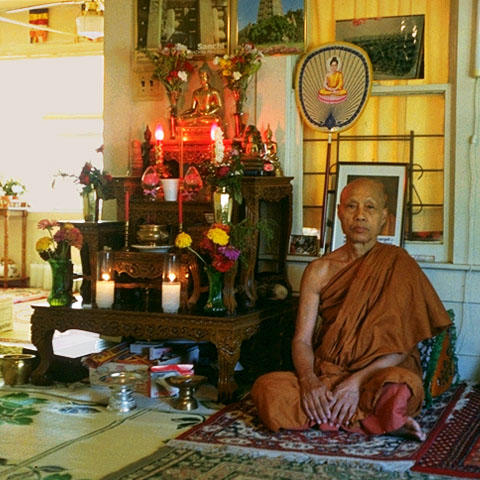 The Theravada school of Buddhism took root in Sri Lanka and Southeast Asia. Its major characteristics include the importance of Pali Canon of scripture and commentary; the veneration of the historical Shakyamuni Buddha; and the spiritual model of the arahat, or “worthy ones” who have attained nirvana.
The Theravada school of Buddhism took root in Sri Lanka and Southeast Asia. Its major characteristics include the importance of Pali Canon of scripture and commentary; the veneration of the historical Shakyamuni Buddha; and the spiritual model of the arahat, or “worthy ones” who have attained nirvana.
View full album
The Theravada, literally “The Way of the Elders,” is the school of Buddhism most prominent today in the countries of Southeast Asia and Sri Lanka. As the name suggests, it regards itself as the school most faithful to the teachings that have been passed down through the generations. In the United States, Theravada Buddhism has had its greatest growth since the 1960s when Euro-Americans started practicing vipassana, or “insight meditation.” At the same time, large numbers of immigrants from Sri Lanka, Thailand, Cambodia, and other traditional Theravadin countries have come to the United States. The major characteristics of the Theravada can be summarized as follows:
1. The Pali Canon, comprised of scriptures and commentaries written in the ancient Pali language, is regarded as the most accurate source of the teachings of the historical Buddha. While other schools have various other recensions of the canon or a broader interpretation of what the canon includes, Theravadins believe that the Pali Canon is definitive.
2. The human and historical Buddha, the spiritual pathfinder who lived 2,500 years ago in India is emphasized. While other schools of Buddhism might focus on the teachings of another Buddha or venerate multiple Buddhas, the Theravadins see Shakyamuni Buddha as central.
3. The ideal spiritual model of Theravada Buddhism is the arahant ( in Pali) or the arhat (in Sanskrit). Arahants, literally “worthy ones,” are Buddhist practitioners who attain nirvana and have perfected their discipline such that defilements and desires are extinguished.